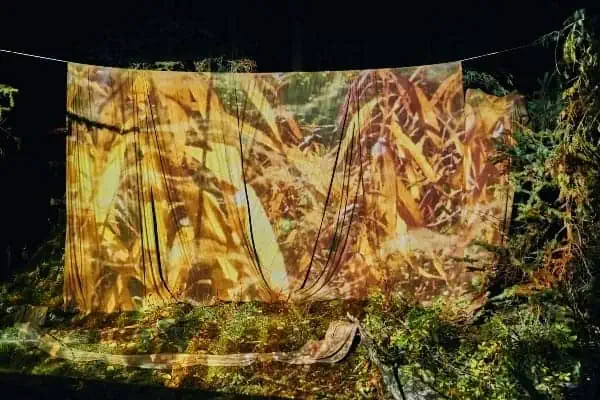From “Don’s Descent,” the small hill behind our house, one can look as far as Haines Junction.
Mount Decoeli and Mount Archibald loom on the western horizon when skies are clear.
In front of Decoeli, I can clearly make out Paint Mountain. You might know Paint Mountain as the rock face towering over Pine Lake, the one with the radio equipment on top.
Over the years, I have been able to see Paint Mountain (see photo #1) – which is around 100 km west from my place – many times. However, on a few special occasions I have I seen it turning into an amazing mirage that looks like a castle: a Fata Morgana.
Named after Morgan le Fay, a sorceress in the times of King Arthur, a Fata Morgana is what’s called a superior mirage, meaning that whatever looms at the horizon is seen above it’s actual position.
Such mirages, being superior, appear to show Paint Mountain elevated above its normal position. In a Fata Morgana this mirage comes in the form of great pillars and plateaus, and it seems that I see these mirages only in the winter.
Recently, when travelling east from Mendenhall to Whitehorse, I saw what looks like a brand spanking new mountain near Stony Creek – see photo #2. It was a mirage – another Fata Morgana. This mirage of a new mountain range appears to be beyond Whitehorse, again around 100 km from where I was standing.
In photo #3, you can see that on clear days there is no such mountain. Only the ridge in front of it is visible, and one snow covered peak peeking out from behind this ridge, but no mountain range as one can see in the Fata Morgana.
I read that superior mirages are more likely to occur in polar regions. In my research I couldn’t find anything on the typical distance between the viewer and the mirage, but I can tell you I have never seen a mirage towards the south or north from here. I am wedged in, in that direction, with the mountains to the north being five to 10 km away, and the ones towards the south being 15 to 20 km distant.
From here on the Alaska Highway, I only have long views, over 100 km unobstructed, along the valley to the east or west.
What I did happen to see towards the south one day (photos #4 and #5) were atmospheric optics of another kind.
Back at “Don’s Descent” (photo #4) I saw a subsun. When you travel by airplane, you might have seen this phenomenon more often.
This particular subsun is part of a lower sun pillar. Sun pillars can also frequently be seen from an airplane. The lower sun pillar can show itself when you are looking down a slope at sunset or sunrise and, as was the case here, I was looking down into a valley with ice fog.
You don’t have to be in the mountains or the air to see an incredible optical phenomenon in the sky. The first time I saw a circumzenithal arc, I was close to town. I looked up from out of the trees and saw an upside down rainbow – which is another name for a circumzenithal arc. I later learned that this was probably part of a 46-degree halo.
Now, knowing more, I search the entire sky after seeing something extraordinary, such as sundogs, there is often a lot more to it. When I see atmospheric phenomena in the sky in town, the fun thing is that soon everybody is gazing upwards while starting to talk to each other. The best comment I have heard was, “it’s the Alaskans doing experiments.” For all I know, this could be true. Or it could even be aliens.
Whatever the explanation for these atmospheric optics, I can at least name them now.
Photo #5 was taken looking from the Alaska Highway towards Kusawa Lake. On the left side of the photo is Mount Vanier (the tent with cloud on top) and Mount Coudert (the lower mountain past Vanier); Kusawa Ridge is on the right side of the photo.
The big white splotch above the mountains in the middle of the photograph is the sun. There are two sundogs, also called parhelions; one on either side of the sun.
The circle around the sun, in which these two sundogs appear, is a 22-degree halo. Also, when you look closely, you can see a faint line connecting the sundogs with the sun. This line, which extends to the east, is part of the parhelic circle.
Above the sun you see a dish on top of the 22-degree halo, which is an upper tangent arc. Faintly visible at the very top of the photo, you can see the upside down rainbow – the circumzenithal arc.
There are quite a few more of these sky phenomena and if, unlike myself, you are a nighthawk, you might know more about the wonders found in the night sky.




